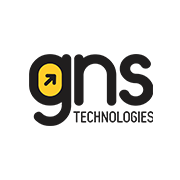A programming language must need a platform to have it executed. Machine Learning can be implemented with the help of PYTHON, R, or MATLAB. A programming tool is always beneficial for programmers to implement a model or a program. A device is always helpful in detecting bugs and other parameters. How can a model be trained, or how can a value be predicted? With the use of machine learning algorithms, this is possible. Machine Learning helps industries forecast their growth, profit, etc., using various algorithms like regression, classification, etc.
What is Machine Learning?
Machine Learning is a part of Data Science. It uses various algorithms to train the model and predicts the output. The study of “learning” processes, or processes that use data to improve performance on a set of tasks, is the emphasis of the field of machine learning. Machine Learning is classified into the following:
- i) Supervised Learning
- ii) Unsupervised Learning
iii) Reinforcement Learning
- iv) Semi-Supervised Learning
- i) Supervised Learning
Supervised Machine Learning depends on the labeled set of data. It is used to classify the data based on the labeled location. Some of the best-fit algorithms that fall under this category are Decision Trees, Logistic Regression, and Linear Regression.
- ii) Unsupervised Learning
Unsupervised Learning depends upon the unlabeled dataset. It is used in the clustering of data. Some examples that fall under this category are the K-Nearest Neighbor algorithm, K-Means Clustering, etc.
iii) Reinforcement Learning
This procedure makes machine learning by optimal methods. Some of the applications involved are Autonomous Cars, etc.
- iv) Semi-Supervised Learning
Semi-Supervised Learning is an intermediary between Supervised and Unsupervised Learning. One of the best examples is Text Classifier.
Machine Learning Tools
We may evaluate data, learn from it, and make decisions with machine learning algorithms. Algorithms are used in machine learning, and the machine learning library is a collection of algorithms. We’ll now look into some of the Machine Learning (ML) Tools.
- Tensor Flow
TensorFlow is one of the most extensively used open-source libraries for deep learning and machine learning model training. The Google Brain Team built it, and it offers a JS library. It is well-liked by machine learning specialists, who utilize it to create various ML applications. Large-scale machine learning and deep learning projects provide a rich library, tools, and resources for numerical computing. It enables data scientists and ML developers to design and build machine learning applications swiftly. Users may quickly get started with TensorFlow and machine learning thanks to the high-level Keras API that TensorFlow provides.
- PyTorch
PyTorch is an open-source machine-learning framework that is based on the Torch library. This free and open-source framework was developed by FAIR (Facebook’s AI Research unit). It’s a well-known machine learning framework that ..may use for many different tasks, including computer vision and natural language processing. Compared to the C++ interface, PyTorch’s Python interface is more interactive. Other deep learning tools, such as PyTorch Lightning, Hugging Face’s Transformers, Tesla Autopilot, etc., have been created in addition to PyTorch. It defines a Tensor class with an n-dimensional array that can execute tensor operations and support the GPU.
3.Google Cloud ML Engine
A computer system might perform while training a classifier with extensive data. However, numerous deep learning or machine learning applications need millions or even billions of training datasets. Alternately, the algorithm being employed is executing slowly. One should choose the Google Cloud ML Engine in this situation. It is a hosted platform where data scientists and machine learning engineers create and operate machine learning models of the highest caliber. It offers a managed service that enables programmers to quickly generate ML models from any data, regardless of size.
4.Amazon Machine Learning (AML)
Amazon Machine Learning (AML), a potent and cloud-based machine learning software program, is frequently used to produce predictions and create machine learning models. It also combines data from various sources, including Redshift, Amazon S3, and RDS.
5.NET
A machine learning framework for scientific computing called Accord.Net is built on the.Net programming language. It is integrated with C#-written libraries for image and audio processing. This framework offers various libraries for various machine learning applications, including pattern recognition, linear algebra, and statistical data processing. The Accord Statistics, Accord.Math, and Accord.MachineLearning packages are some of the more well-known ones of the Accord.Net framework.
6.Apache Mahout
The Apache Software Foundation’s open-source project Apache Mahout is used to creating machine learning programs primarily focusing on linear algebra. With its networked linear algebra architecture and mathematically expressive Scala DSL, programmers may quickly put their algorithms into practice. Additionally, it offers Java/Scala libraries for mathematical operations mainly focused on statistics and linear algebra.
7.Shogun
Shogun is a machine learning software library that is free and open-source. It was developed in 1999 by Gunnar Raetsch and Soeren Sonnenburg. This C++ software library uses SWIG to offer interfaces for several languages, including Python, R, Scala, C#, Ruby, etc. (Simplified Wrapper and Interface Generator). Shogun’s primary focus is on various kernel-based techniques for regression and classification issues, including Support Vector Machine (SVM), K-Means Clustering, etc. Additionally, it offers a full implementation of hidden Markov models.
- Oryx2
It is based on Apache Kafka and Apache Spark and manifests the lambda architecture. For large-scale, real-time machine learning projects, it is frequently employed. It is a foundation for creating apps, providing complete filtering, regression analysis, classification, and clustering packages. In addition to Apache Spark, Hadoop, Tomcat, and Kafka, it is written in Java. Oryx 2.8.0 is the newest version of Oryx2.
- Apache Spark MLib
Scalable machine learning library Apache Spark MLlib is available for Apache Mesos, Hadoop, Kubernetes, standalone, and the cloud. Additionally, it has access to data from many data sources. It is an open-source framework for cluster computing that provides fault tolerance, data parallelism, and an interface for whole clusters.
- Google ML Kit for Mobile
Google offers the ML Kit to mobile app developers with machine learning know-how and technology to build more reliable, optimized, customized apps. This toolkit can be used for barcode scanning, face detection, text recognition, and landmark detection. It can also be used for offline work.
Conclusion
In this topic, we have discussed the definition of Machine Learning, its types, and the tools required for Machine Learning (ML). Machine Learning is a part of Data Science. Candidates with the proper skill set in Data Science have preferred by-product-based companies. Where can a candidate upskill themselves in the field of Data Science? Many institutes in India train candidates in the field of Data Science. At SkillSlash, candidates are given 1:1 mentorship and are made to work on live projects. Skillslash also has in store, exclusive courses like Data Science Course In Chandigarh, Full Stack Developer Course in Mumbai and Data Structure online course to ensure aspirants of each domain have a great learning journey and a secure future in these fields.
Sounds amazing, doesn’t it? Contact the student support team today to know more about the program and how it can benefit you.




